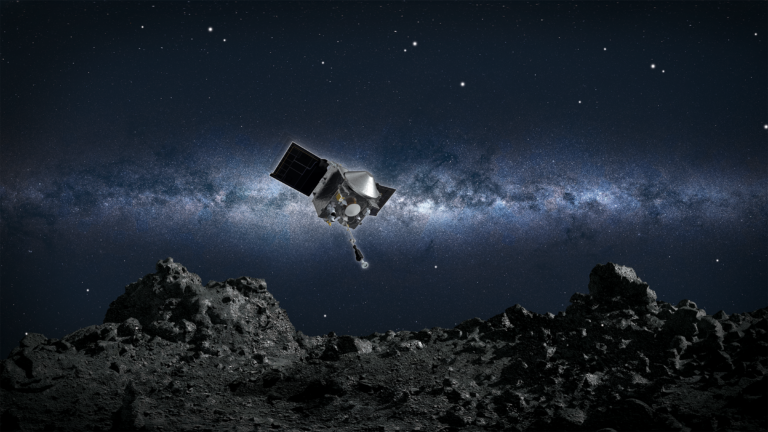
Nowadays, asteroids have lost a lot of their mystery. NASA’s OSIRIS-REx has now successfully delivered a generous helping of asteroid regolith to Earth after a Japanese mission successfully landed robots on a space rock and collected a little piece for the road. A few weeks after the mission’s landing on Earth, NASA presented the sample on Wednesday. The agency claims that the asteroid Bennu is abundant in carbon and water, which may indicate that it has the elements necessary for life.
To reach the asteroid 101955 Bennu, close to the Earth, OSIRIS-REx was launched seven years ago.
The diameter of this asteroid, which is carbonaceous, is approximately 1,610 feet (490 meters).
The mission entered Bennu’s orbit in 2018, and in 2020 it made a descent to collect a sample.
But, NASA received a lot more than the minimum 60g of material it had hoped for.
According to NASA, the OSIRIS-REx sampling system performed considerably better than the scientists had anticipated. As the team opened the return capsule, they discovered a lot of dust and rocks scattered throughout (see above). Opening and cataloging the sample has become more time-consuming as a result. As a result, NASA lacks a complete inventory of the cargo. Although it’s definitely closer to the 2-kilogram ceiling than the 60g minimum considering all the “extra material” NASA has discovered within the capsule.
NASA delivered the sample to Johnson Space Center in Houston after recovering the lander from the Utah desert. To prevent contamination, experts have there locked the container inside a clean room. The team has performed some preliminary analyses, including electron microscopy, infrared measurements, X-ray diffraction, and chemical element analysis as they meticulously rescue every scrap of Bennu.
Based on that research, NASA claims that Bennu’s interior is “diverse,” containing large amounts of water and carbon compounds, as well as magnetite, which can catalyze organic reactions. According to NASA Administrator Bill Nelson, “The OSIRIS-REx sample is the largest carbon-rich asteroid sample ever sent to Earth and will help scientists examine the beginnings of life on our own planet for centuries to come.”
Further information on the Bennu sample will become available when NASA continues the extraction procedure. It will disperse some of the information to further NASA labs, academic institutions, and global aerospace partners like JAXA. Moreover, the Smithsonian Institution, Space Center Houston, and the University of Arizona will each receive a small portion of the sample for public display. The majority of it will be kept in storage, though. So that future generations of scientists can evaluate it with more cutting-edge technologies than we can today, NASA intends to store 70% of the returned data.

